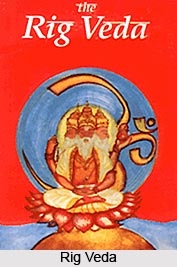 Vedanga Siksas are those Sutra texts which deal with Siksa or phonetics. Those Sutra texts which deal with Siksa are at least as old as the Kalpasutras. While the Kalpasutras are supplementary works to the Brahmana portion of the Veda, the sutras of the Vedanga Siksa are very closely related to the Samhitas of the Vedas. The term `Siksa` actually means instruction, in particular instruction in reciting. This means correct pronunciation, accentuation etc. of the Samhita texts.
Vedanga Siksas are those Sutra texts which deal with Siksa or phonetics. Those Sutra texts which deal with Siksa are at least as old as the Kalpasutras. While the Kalpasutras are supplementary works to the Brahmana portion of the Veda, the sutras of the Vedanga Siksa are very closely related to the Samhitas of the Vedas. The term `Siksa` actually means instruction, in particular instruction in reciting. This means correct pronunciation, accentuation etc. of the Samhita texts.
The earliest mention of this Vedanga is to be found in the Taittiriya Upanishad. In this work, the teaching of the letters, the accents, the quantity (of syllables), the stress, the melody and the combination of words in continuous recitation, are enumerated as the six chapters of the Siksa. Like the doctrine of the ritual, the Siksa also arose out of a religious need. For in order to perform a sacrificial act correctly it was not only necessary to know the ritual, but also to be able to pronounce the sacred texts accurately and recite them without errors, just as they were handed down in the Samhitas. This presupposes that, at the time when the text-books of the Siksa originated, the Vedic Samhitas were already established as sacred texts, that they had already obtained a definite form by the agency of editors trained in phonetics. This means, for instance, that the Rig Veda Samhita does not give the hymns in the form in which they were composed by the ancient singers. Though the editors did not alter the words themselves, yet in the matter of pronunciation, the initial and final sound of the words, the avoidance of the hiatus, and so on, they were led by their phonetic theories into deviating from the original manner of recitation.
The Vedic Samhitas themselves are then already the works of phoneticians. But apart from the Samhita Pathas, i.e. the Samhita texts, as they had to be recited according to the teaching of the Siksa, there are also the so-called Pada Pathas or "word-texts". In these works, the individual words appear separate from the phonetic connection in which they are presented in the Samhita text. These Pada Pathas are, of course, the work of theologians trained in phonetics. In fact they can be said to be the work of grammarians, for they present the text of the verses in a complete grammatical analysis.
Thus discussed are the Siksas of the Vedangas.



















